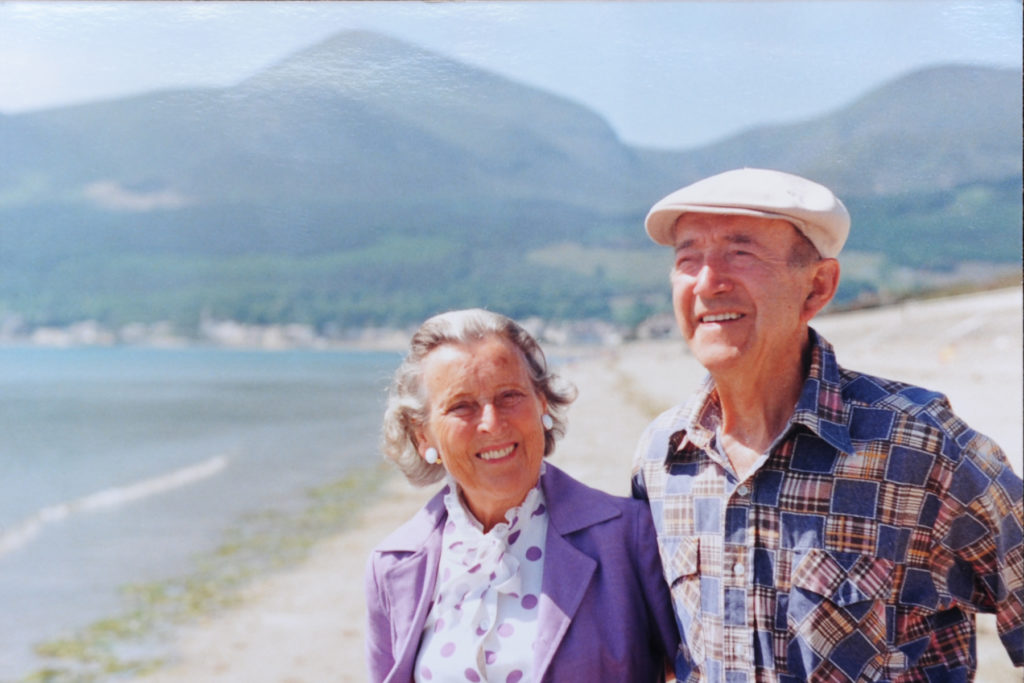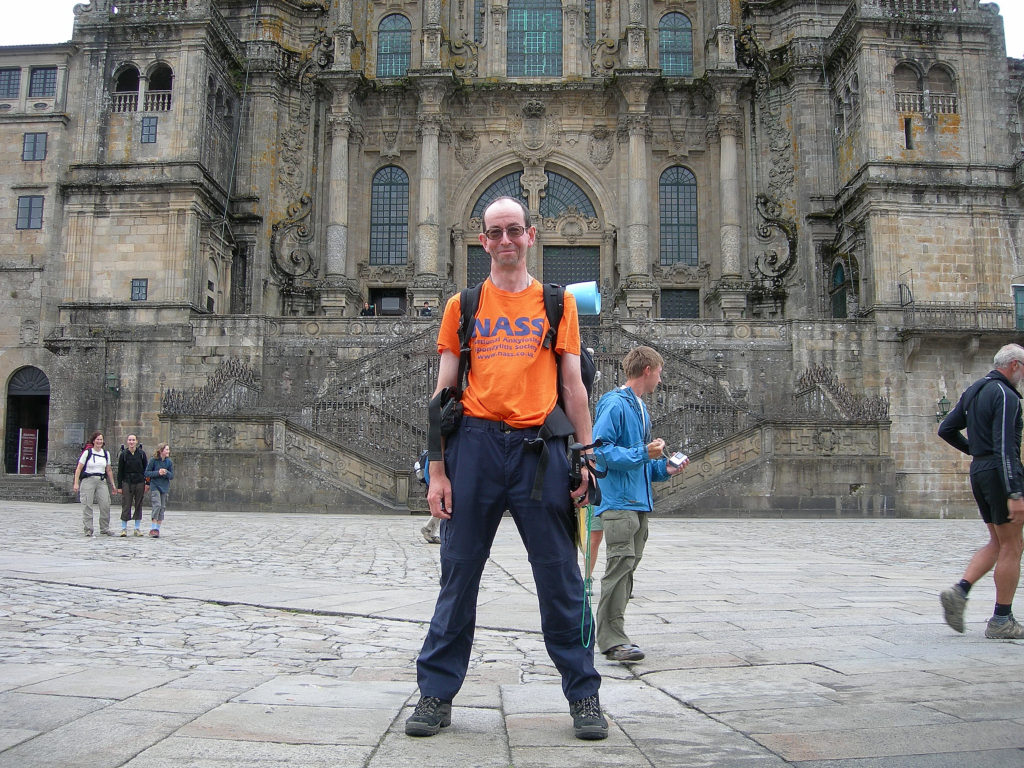Axial SpA, My Dad and I
Major Francis J. Murray of the Royal Army Medical Corps, known to his family and friends as Frank, was a prisoner of war in Singapore and Japan during WWII. He was held captive for over three years. During this time, Frank wrote a secret letter to his wife every day. The letters provide a fascinating insight into the daily life of people living in prisoner of war camps. They also point to evidence that Frank had been living with undiagnosed axial SpA for years and was experiencing flares with his symptoms getting worse, during his time as a prisoner.
Frank was eventually diagnosed with axial SpA in 1980 just two years before his son, Paul.
Today, in honour of Remembrance Day, Paul reflects on both of their journeys …
“I am writing this at the time of year when we remember those who have fought and died during two world wars and other past conflicts. My father was one such combatant and returned home to Northern Ireland at the end of the Second World War. He received his diagnosis of axial SpA in 1980, just two years before mine but his was a decidedly lengthier process. He searched for answers for as long as 50 years, whereas I waited for just months.
In a letter to my mother from the jungles of Malaya on 15 November 1941, he referred to “10 rheumatic weeks” as a teenager in his bedroom, in the same Belfast home where my parents later brought up my four siblings and me.

Frank and his wife Eileen on the beach at Newcastle, Co. Down, Northern Ireland.
In February 1942 he was taken into Changi POW Camp, after the fall of Singapore to the Japanese. Three days after his arrival, he was hospitalised for five days with sub-acute rheumatism. He was admitted to hospital in June that year for a further four weeks, where he was given an injection into his arthritic spine and forced to stay immobile – something we know today, would have made his symptoms of axial SpA much worse. At this time, he wrote about feeling like an “awful crock”. He would have been about 30 years old, but felt more like an old man.
Dad survived 42 months in Changi and a further six POW camps on the northern Japanese island of Hokkaido. In two of these, Muroran and Nishi Ashibetsu/Raijo, he was the Officer Commanding and the Chief Medical Officer of the 350 British POWs.
After liberation, he returned to work in the newly created NHS as a GP in north Belfast where he grew up. It is all the more surprising that as a doctor he was not diagnosed with axial SpA until five years after he retired in 1975. We all noticed how progressively more stooped he had become in his later years, but he was never one to complain.
Neither my father nor I were referred for physiotherapy in the 1980s when there was little awareness of the condition and even less of the huge benefits of targeted exercise.
I was first diagnosed with axial SpA in 1982 when I was 28 and teaching in a secondary school in Newton-le-Willows on Merseyside. Before my diagnosis, I can remember struggling to walk up hills in Newcastle, County Down where my parents lived. The pain in my sacroiliac joints was so severe. In comparison to my dad, and lots of other people, I received my diagnosis relatively quickly, it was probably only a matter of months before I got the answers I needed.

Paul outside Santiago Cathedral after a fundraising pilgrimage in 2009.
In August 2009 I set out to walk the second of three long-distance pilgrimages to the shrine of St James in the cathedral in Santiago de Compostela in north-west Spain. Dad had passed away in 1993 at the age of 80 so uppermost in my thoughts this time was my mother who was seriously ill. I covered 300km and raised £630 for three charities, one of which was NASS.”
Paul Murray
You can find out more about Paul and his dad’s story in a book he has written entitled From the Gaeltacht to Galicia, a Son’s Tale. The book is available from the online book seller, thegreatbritishbookshop.co.uk